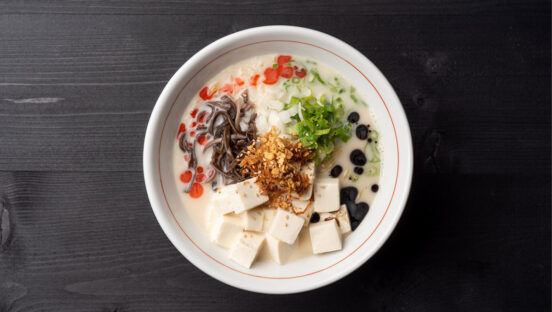








Striking Oil
Cooking oil is hardly the most glamorous ingredient to go into a dish’s preparation, but when properly applied, it has the potential to create nuance both in terms of flavor and texture. For years, the catch-all category of “vegetable oil” featured a mix of canola, corn, soybean, safflower, and other oils. While the traditional blends remain prolific, chefs and curious consumers are also paying attention to more niche varieties. The type of dish, preparation method, cooking temperature, and other factors often dictate which oil is the best fit.
Here’s the lowdown on oils, from different varieties and flavor trends to cooking techniques and menu applications.
Quality Matters
Using high-quality cooking oils not only saves operators time and money, it’s also an eco-friendly choice. Premium cooking oils do not need to be disposed of as frequently as their lower-quality counterparts, and oftentimes the manufacturers provide recycling dumpsters and pickup service. (Buyers Edge Platform, Venture Foods)
Smokin’ Hot
An oil’s smoke point refers to the temperature at which it begins to burn and should no longer be consumed or used for cooking. So dishes like stir-frys are generally cooked in peanut oil or refined coconut oil because they can withstand the high temperatures. Extra virgin olive oil, by contrast, should only be used as a cooking oil at low to medium heat, and toasted nut and seed oils, like walnut and pistachio, should not be heated at all.
Oil smoke points
Avocado: 520°
Peanut: 450°
Coconut oil: 450° (refined)
Corn: 450°
Sunflower seed: 440°
Vegetable: 400°
Coconut oil: 350° (Unrefined)
Extra virgin olive: 325°
Fat for All
All cooking oils contain saturated, polyunsaturated, and monounsaturated fats, but the portions of each vary widely. Coconut oil ranks the highest in saturated fats, grapeseed in polyunsaturated fats, and olive oil in monounsaturated fats. (Cook Smarts)
Keep It Clean
Operators should filter their oil at least once per day. Because the cooking oil is absorbed by the food, a cleaner oil ensures a better finished product. (Buyers Edge Platform, Venture Foods)
350°F
The standard oil temperature for deep frying. (Buyers Edge Platform, Venture Foods)
Oils You Oughta Know: Olive Oil
Even as new oils flood the market, olive oil remains a menu all-star. Cold-pressed, extra virgin oil has a buttery texture with flavor notes varying by its area of origin and is best applied as a finishing oil. Refined olive oil is lighter in color with a less nuanced flavor. It can be used for sautéing vegetables and grilling meats.
Oils You Oughta Know: Avocado Oil
In recent years, avocado oil has grown in popularity thanks to its health halo, mild taste, and versatility. Like extra virgin olive oil, it is used in both cooking and non-cooking applications. Avocado oil can handle high temperatures for frying and sautéing, but it can also be mixed as a dressing, condiment, or marinade.
Oils You Oughta Know: Coconut Oil
While most oils remain in liquid form at room temperature, coconut oil solidifies and must be heated before cooking. Refined coconut oil has a more neutral flavor and can handle higher temperatures, making it ideal for pan-frying. Unrefined, or virgin, coconut oil retains its taste and aroma and is better suited for baking and sautéing.












